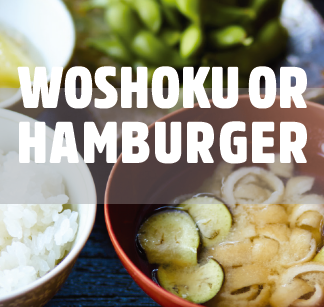WOSHOKU OR HAMBURGER
Woshoku is the name given to traditional Japanese food. It has been very popular for centuries but lately it seems like fast food is taking over its place.
Woshoku is simple but also very complicated. It is salty, sweet, sour and a little bitter. It is also always beautifully presented. It is the traditional food of Japan and has a great value in the country. Woshoku is not only about preparing food and eating. It is also about respecting the nature. Seasons play an important role in Japanese dishes. Japanese people respect the nature’s cycle so they only use seasonal vegetables, fruits and even fish while preparing woshoku.
a)..................................
Woshoku is not just one dish. Imagine a big tray with a few different dishes. There is always a bowl of plain steamed rice. On the side there is always a nice bowl of miso soup. There is usually some grilled fish cooked with soya sauce. There are also some vegetables, some seasonable fish and also a small plate of pickled vegetables. It has the ideal nutritional balance. Very little animal fat is used in the dish and this is one cause of the longevity of Japanese people. Moreover, it is the reason why obesity is not common with Japanese people.
b)..................................
On the other hand, it takes a lot of time to prepare and cook woshoku. The chef cuts pieces of food into flowery shapes or wrap with strips of food and tie like a package with an edible ribbon. Food is placed in a decorative fashion. It is usually served on ceramic dishes in different sizes and designs.
c)..................................
Taro Tominari is a chef at one of Tokyo’s most popular restaurants. He says “Japanese food is so beautiful to look at but it takes a lot of time. People are working and busy, and no longer have that kind of time.” Because of those reasons, there are fast food chains everywhere in Japan. You can easily find a Domino’s Pizza and or McDonald’s. These restaurants are also cheaper than the ones that serve traditional Japanese food. That is why they attract busy working adults and teens. Also the younger generation is used to more greasy, spicy or sweet food. The United Nations cultural organisation added traditional Japanese food to its cultural heritage list. They want to keep Japanese traditional dishes alive.

